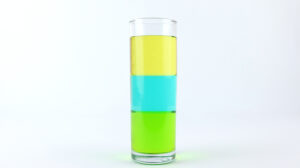 Recently, we have been exploring the many stages of the thermal solution design process. Thus far, we have looked at the role of customization in the design phase, why we prototype prior to manufacturing, the emphasis we place on collaborative engineering, and how we oversee this entire manufacturing process from start to finish. In addition to the process, it is important to know which thermal methods to use for which industrial applications, and not all heat exchangers are created the same. In today’s blog, the team at Noren Thermal Solutions in Taylor, TX explores the function of passive heat transfer in many of our products, as well as which devices may benefit most from these methods.
Recently, we have been exploring the many stages of the thermal solution design process. Thus far, we have looked at the role of customization in the design phase, why we prototype prior to manufacturing, the emphasis we place on collaborative engineering, and how we oversee this entire manufacturing process from start to finish. In addition to the process, it is important to know which thermal methods to use for which industrial applications, and not all heat exchangers are created the same. In today’s blog, the team at Noren Thermal Solutions in Taylor, TX explores the function of passive heat transfer in many of our products, as well as which devices may benefit most from these methods.
Understanding Natural Convection
Whether you are aware of it or not, there are actually several different methods that can be implemented for thermal management within a given application. Indeed, overheating electronics is one of the primary issues contributing to system failure or shutdown, and ensuring dependability and durability are guaranteed can involve much more than you might have initially expected.
Many manufacturers out there tout the abilities of a one-size-fits-all model, however, it is important to recognize that these methods can and will fall short. After all, you would not expect a general appliance to provide optimal results without considering your parameters and needs, right? Your applications are no different.
While many companies may offer the most from your devices with extreme methods, our team takes on a more natural and efficient approach. One such method we use to accomplish this includes convective heat transfer, which utilizes a fluid to absorb waste heat and transfer energy away from the source. To learn more about this process, give our team a call.
Utilizing Buoyancy Forces
Looking at the details of convective heat transfer, we can see two primary subtypes: passive and active cooling. Whereas active cooling forces the waste energy absorbed by the fluid to flow over a surface, passive methods utilize buoyancy forces to remove waste heat naturally.
Passive cooling, in particular, occurs when fluid motion caused by buoyancy forces results from variations in fluid density. Colder fluid sinks, whereas warmer fluid is less dense and rises. This allows for consistent heat transfer utilizing only the working fluid, thus providing consistency in terms of function.
Maintaining Homeostasis
At the end of the day, the key to effective thermal transfer processes is to maintain internal temperature so that overheating does not occur. In other words, maintaining a status quo, an equilibrium, or simply homeostasis is the balancing act that thermal capabilities aim to address, and we are more than happy to help you get started!
Learn More Today
Contact Noren Thermal Solutions in Taylor, TX by calling 512-595-5700 to learn more about passive heat transfer and how your team could benefit from a custom thermal solution.



